Psychedelic tones of yellow, purple, orange, pink, and blue, along with a fleshy caruncle make him stand out prominently from his peers!
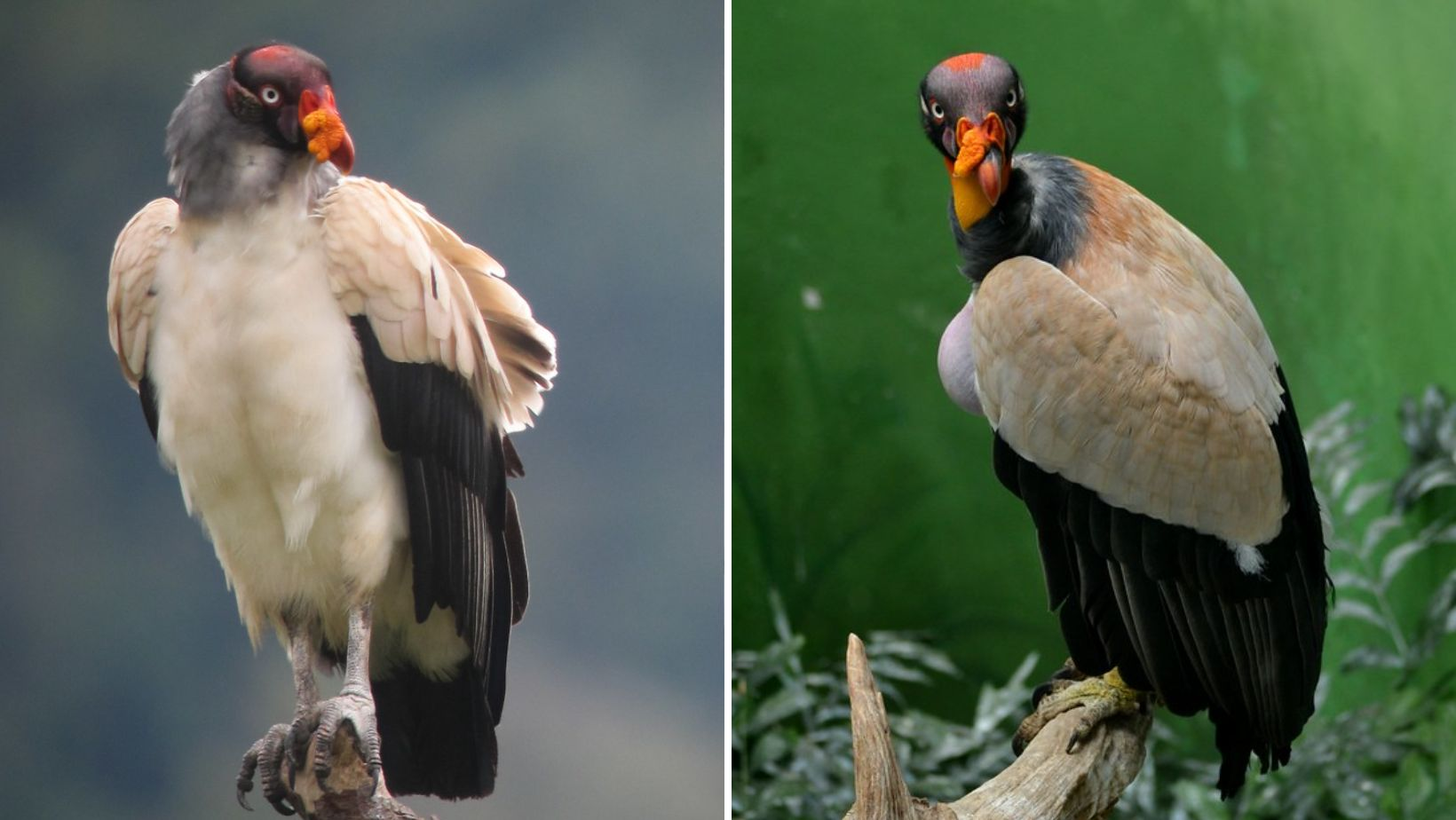
Meet the King Vulture
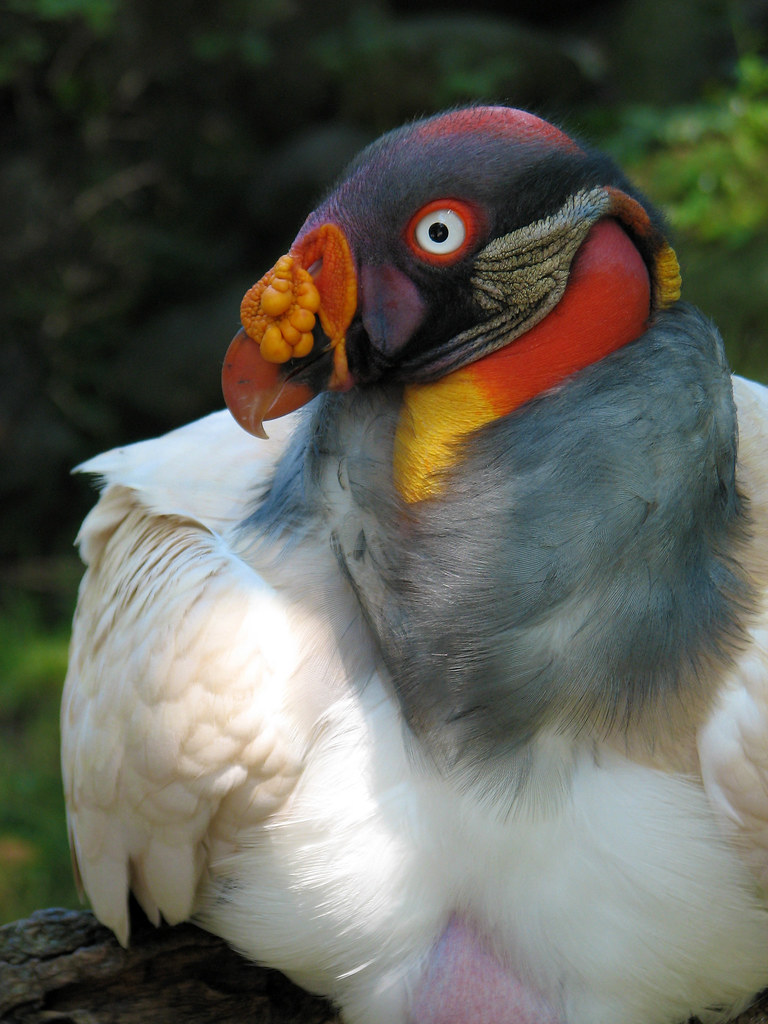
The king vulture (Sarcoramphus papa) is a large species of bird found predominantly in Central and South America. Excluding the two species of condors, the king vulture is the largest of the New World vultures. Its overall length ranges from 67 to 81 cm (26–32 in) and its wingspan is 1.2 to 2 m (4–7 ft). A large bird, their bodies are mainly white, while the head and neck are bald. However, the skin color in this area varies between, yellow, orange, blue, purple, and red. They also have a very noticeable orange fleshy caruncle on their beak.
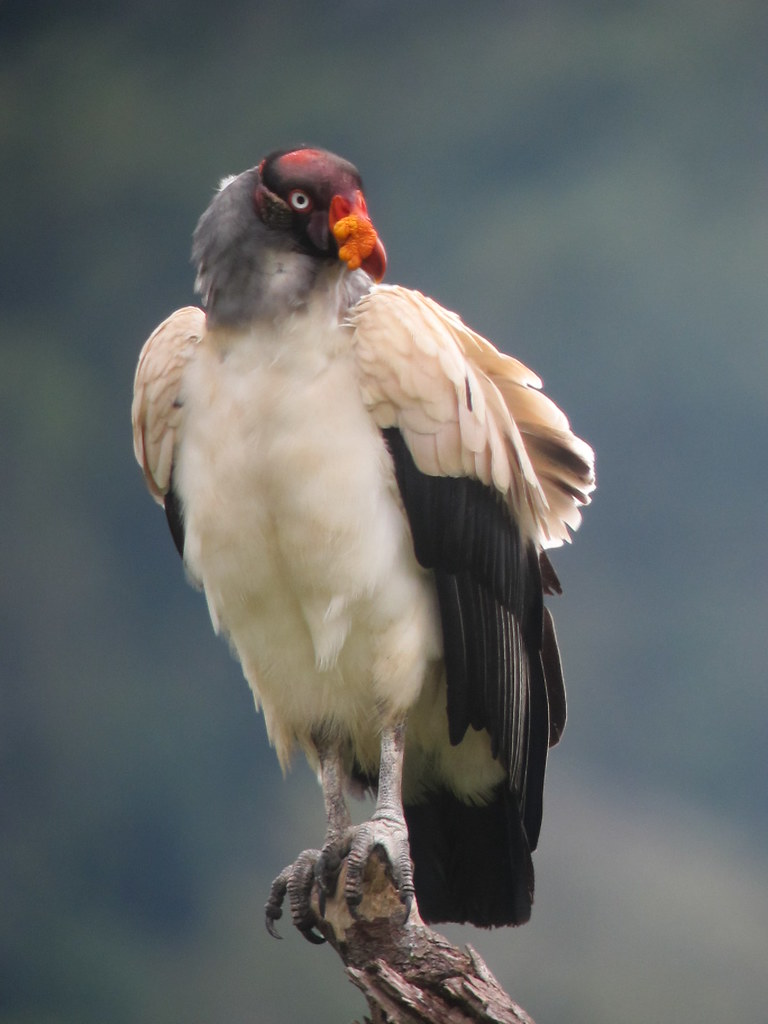
These vultures are sexually dimorphic, with no difference in plumage and little difference in size between males and females.
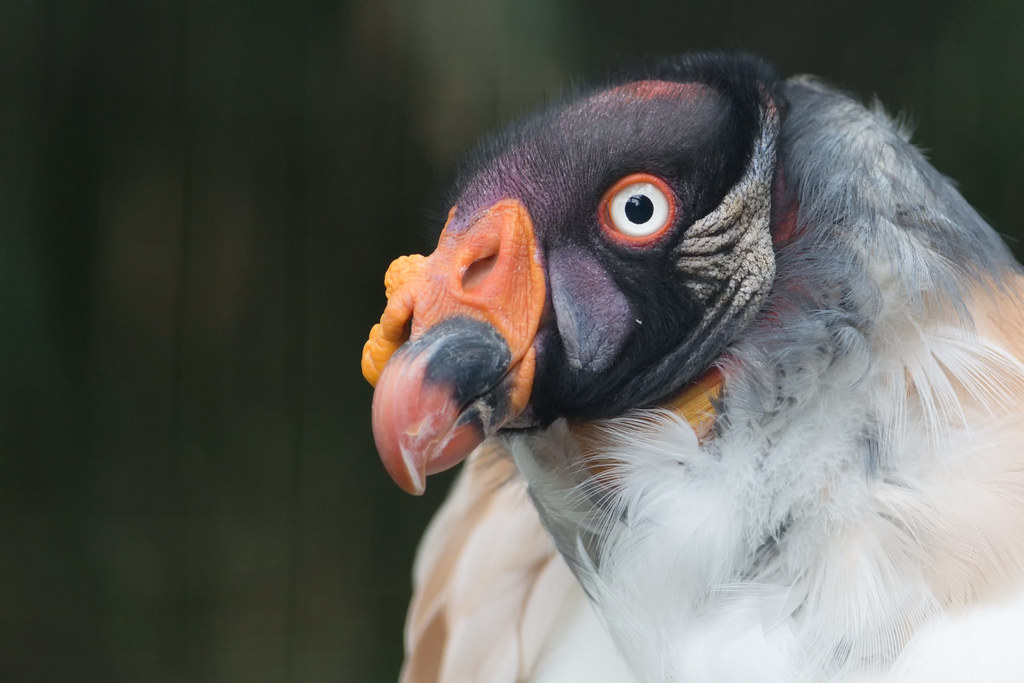
The juvenile vulture has a dark bill and eyes, and a downy, gray neck that soon begins to turn the orange of an adult.
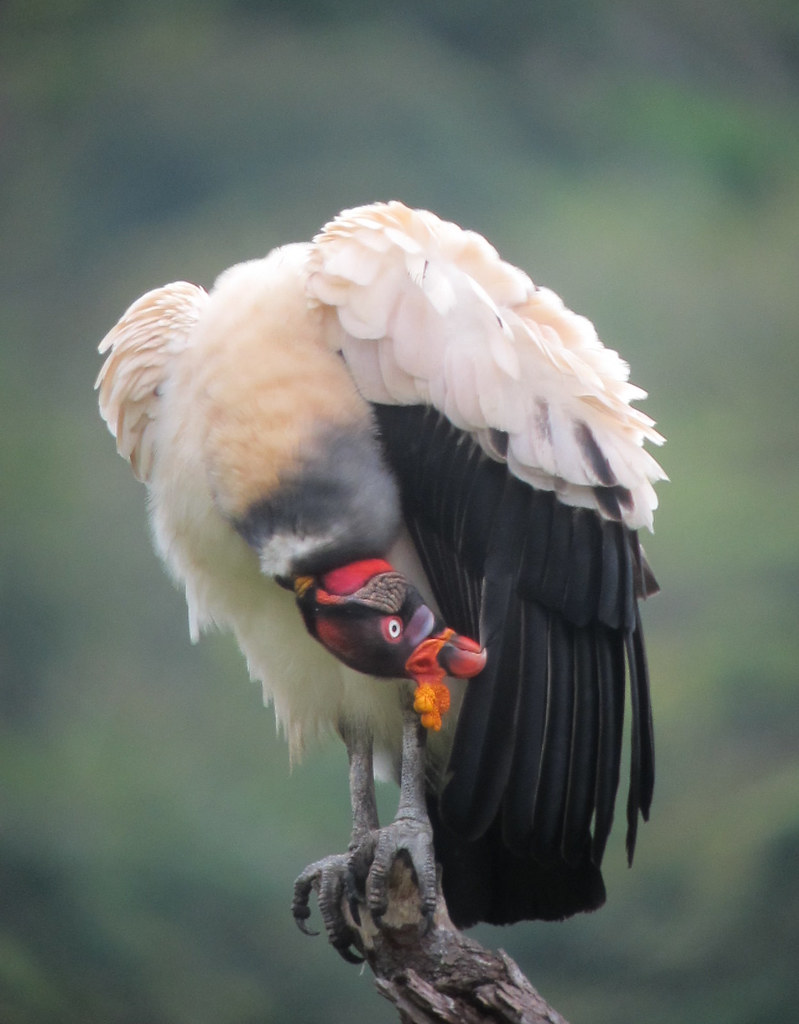
This species lives primarily in tropical lowland forests stretching from southern Mexico to northern Argentina. Preferring to inhabit undisturbed tropical lowland forests as well as savannas and grasslands with these forests nearby. It is often seen near swamps or marshy places in the forests. Sadly they are the sole surviving member of the genus Sarcramphus.
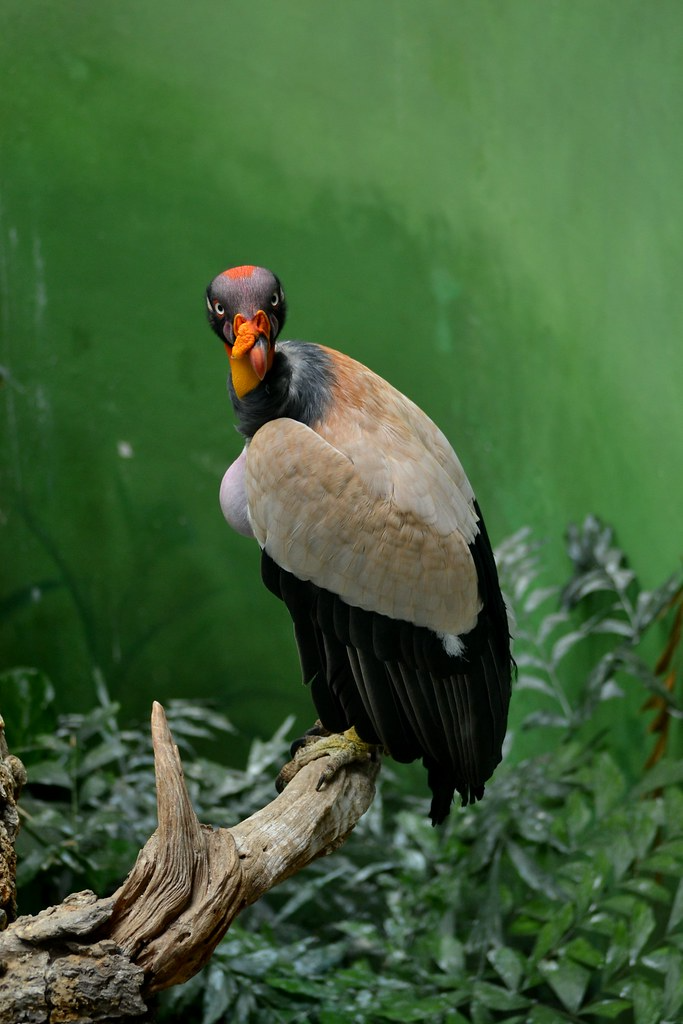
King vultures are scavengers feeding on fresh carcasses of many animal species. They mainly dinning on cattle carcasses to beached fish and dead lizards. A large vulture, they often displace smaller species of vultures from a carcass.
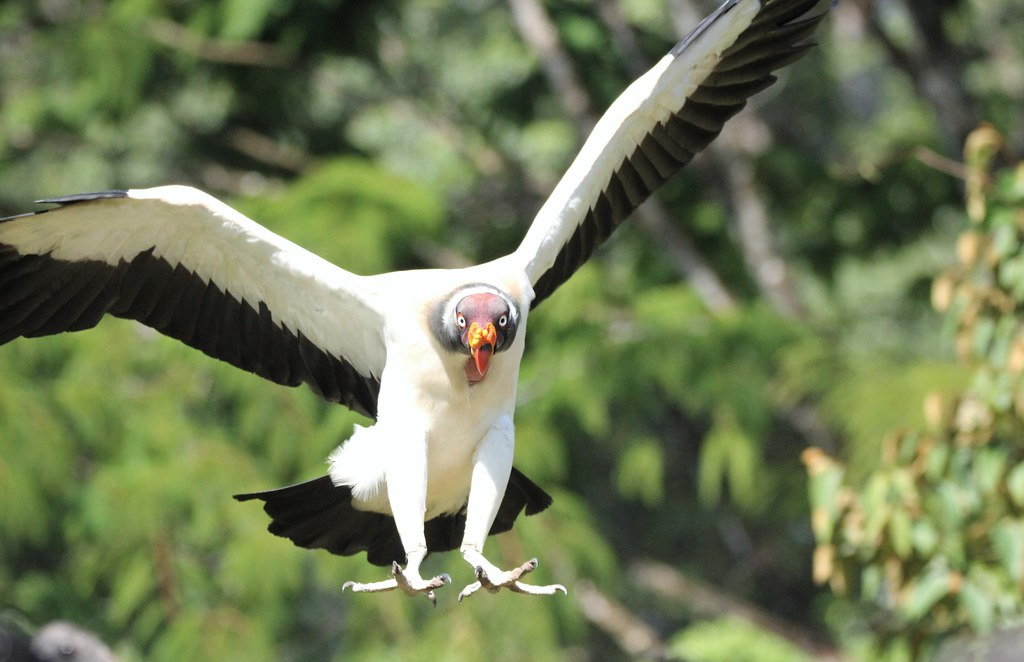
Mainly breeding during the dry season, king vultures mate for life, usually laying a single unmarked pure white egg in a nest built in a hollow in a tree. To ward off predators birds keep the nest as foul-smelling as possible. Both parents incubate the egg for 52 to 58 days prior to hatching. If they lose an egg they tend to replace it after around six weeks. Parents share the incubating and brooding until the young are about one week old. After this stage, they prefer to stand guard rather than brood.
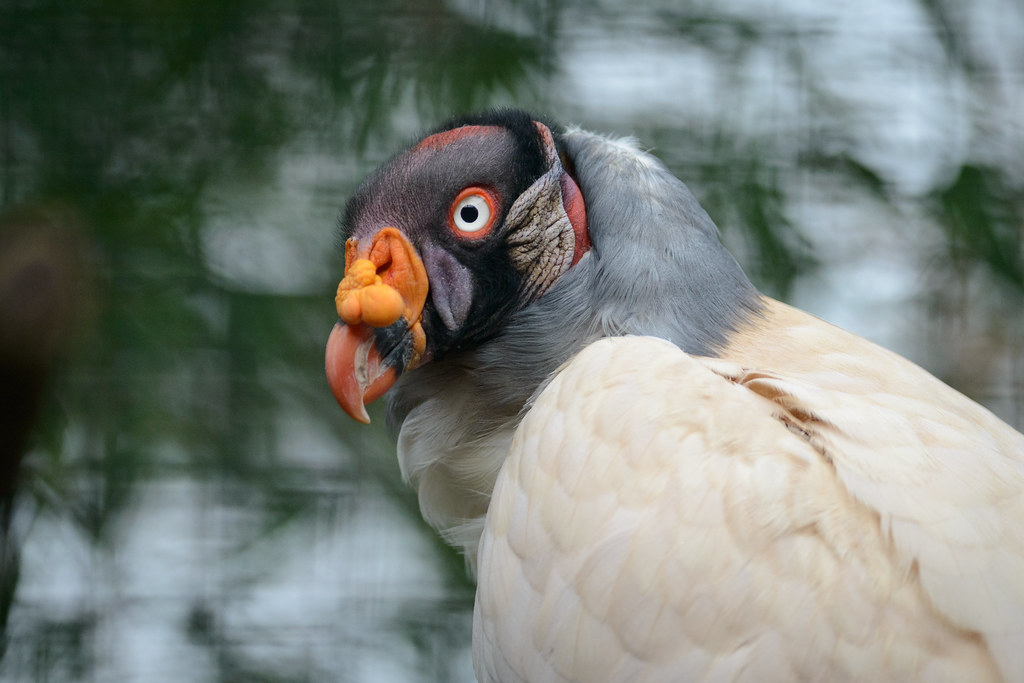
Although the population is thought to be in a slight decline, this bird is a species of least concern to the IUCN list, with an estimated range of 14 million square kilometers (5,400,000 sq mi) and between 10,000 and 100,000 wild individuals.
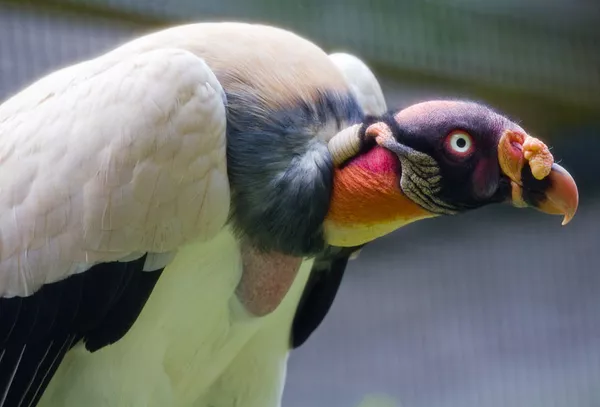
WATCH THESE BIRDS RIGHT HERE BELOW:
